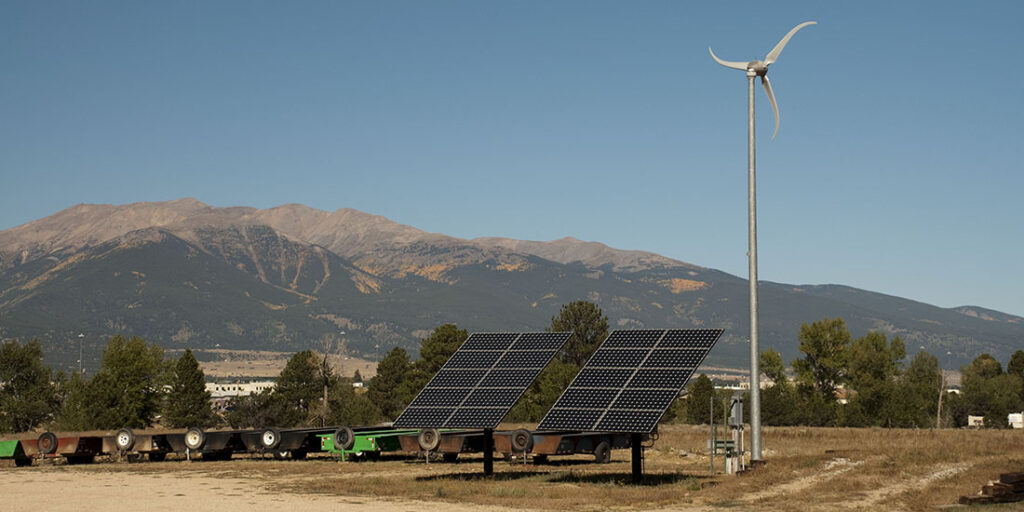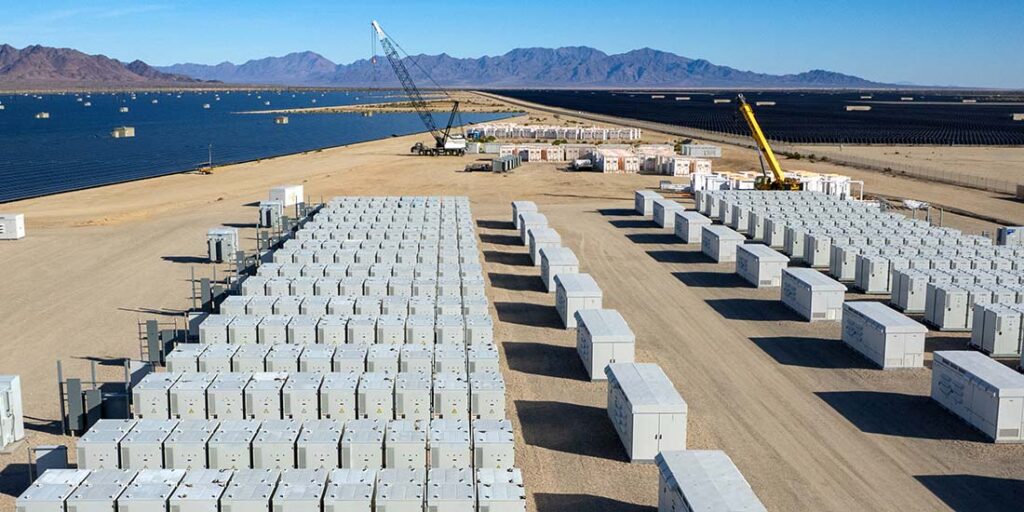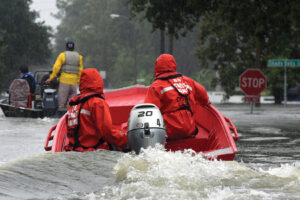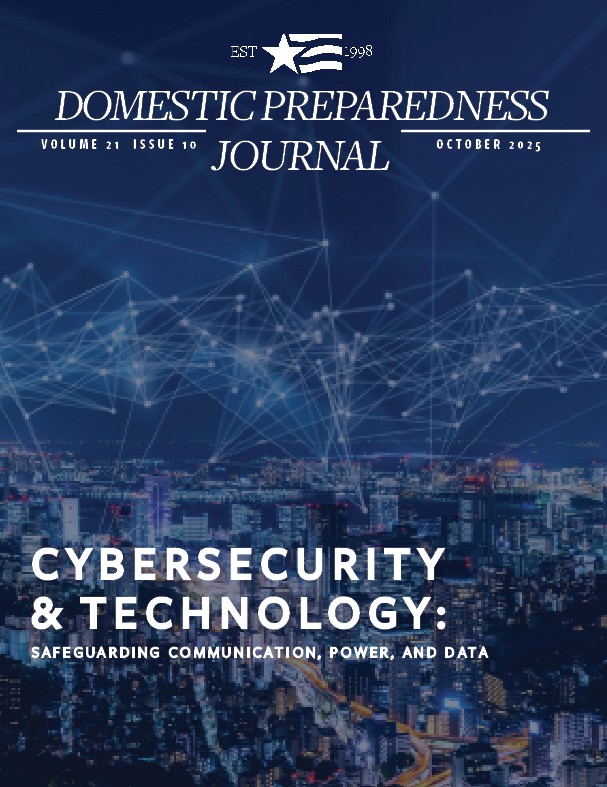Today's Top Picks

How Local Power Can Save the Grid
The United States power grid, including its planned growth of transmission capabilities, was not built for the new demands of data centers such as those used for artificial intelligence or cascading high-impact disasters. Yet, the interdependency that creates modern risk could also build resilience through local energy generation if it were prioritized. In “island mode, local energy can ensure data uptime and safeguard local water, food, and healthcare infrastructure.

Powering Through Crisis: Microgrids and Emergency Response
Aging infrastructure, growing weather events, and rising demand from data centers are straining the nation’s electric grid. Microgrids are emerging as an innovative way to strengthen power reliability and resilience for both routine and emergency operations.

Podcast – Put a Parsec on It: Off-Grid Connectivity for First Responders
Through partnerships with Verizon, Ericsson, and CAL FIRE, Parsec develops antenna technology that extends communication reach and strengthens reliability when infrastructure is down or distant. This discussion with Michael Neenan highlights real-world examples where improved connectivity has supported operations at the border, during wildfires, and across rural communities, showing how dependable communication can ultimately save lives.

The Data Center Dilemma: Understanding America’s New Grid Challenge
The rise of data centers is reshaping the risk landscape for the electric grid. Now essential infrastructure supporting hospitals, communications, finance, and government, data centers are vulnerable to – and potential drivers of – cascading failures when grid reliability falters. The real task now is to provide enough oversight to keep the grid stable and fair without stifling innovation.

Visualize the Data: How One Airport Prioritizes Its Emergency Plans
Every jurisdiction faces the challenge of managing and prioritizing its preparedness efforts. Hartsfield-Jackson Atlanta International Airport has developed an innovative formula designed to simplify that process. Built to work with data visualization software, this flexible model is adaptable for any jurisdiction and helps organizations identify priorities, allocate resources efficiently, and strengthen readiness across all emergency plans.

Green Energy Battery Storage and Impacts on First Responders
The stored-energy field is growing rapidly, and battery energy storage systems are expected to continue strengthening the nation’s grid. However, these systems introduce new risks—hard-to-extinguish fires and chemical exposure that endangers first responders. Awareness and specialized training are essential to manage these new hazards in a dynamic and dangerous environment.
Trending
 Civil Defense: The Unseen Pillars of Preparedness by Stephen Kastensmidt, Scott C. Lanham and John T. “Tim” Briery Core to homeland security are institutions such as active-duty military, the National Guard, FEMA, and local first responders. Complementing these…
Civil Defense: The Unseen Pillars of Preparedness by Stephen Kastensmidt, Scott C. Lanham and John T. “Tim” Briery Core to homeland security are institutions such as active-duty military, the National Guard, FEMA, and local first responders. Complementing these… A Sixth Framework? Civil Defense and the Future of… by George M. Schwartz Comprehensive emergency management in the U.S. evolved from World War II and Cold War-era civil defense, but today, civil defense…
A Sixth Framework? Civil Defense and the Future of… by George M. Schwartz Comprehensive emergency management in the U.S. evolved from World War II and Cold War-era civil defense, but today, civil defense… Lessons From Indigenous Emergency Response in Canada by David Formentini Emergency management in Indigenous communities carries a unique spirit, one not always captured in the structured blueprints of conventional emergency…
Lessons From Indigenous Emergency Response in Canada by David Formentini Emergency management in Indigenous communities carries a unique spirit, one not always captured in the structured blueprints of conventional emergency… Emergency Management on Defense, Homeland Security… by Michael Prasad While some professionals believe that emergency management should revisit civil defense roles in emergency management, others support maintaining a separation…
Emergency Management on Defense, Homeland Security… by Michael Prasad While some professionals believe that emergency management should revisit civil defense roles in emergency management, others support maintaining a separation…Trending
 Lessons From Indigenous Emergency Response in Canada by David Formentini Emergency management in Indigenous communities carries a unique spirit, one not always captured in the structured blueprints of conventional emergency…
Lessons From Indigenous Emergency Response in Canada by David Formentini Emergency management in Indigenous communities carries a unique spirit, one not always captured in the structured blueprints of conventional emergency… Emergency Management on Defense, Homeland Security… by Michael Prasad While some professionals believe that emergency management should revisit civil defense roles in emergency management, others support maintaining a separation…
Emergency Management on Defense, Homeland Security… by Michael Prasad While some professionals believe that emergency management should revisit civil defense roles in emergency management, others support maintaining a separation… Civil Defense: The Unseen Pillars of Preparedness by Stephen Kastensmidt, Scott C. Lanham and John T. “Tim” Briery Core to homeland security are institutions such as active-duty military, the National Guard, FEMA, and local first responders. Complementing these…
Civil Defense: The Unseen Pillars of Preparedness by Stephen Kastensmidt, Scott C. Lanham and John T. “Tim” Briery Core to homeland security are institutions such as active-duty military, the National Guard, FEMA, and local first responders. Complementing these… A Sixth Framework? Civil Defense and the Future of… by George M. Schwartz Comprehensive emergency management in the U.S. evolved from World War II and Cold War-era civil defense, but today, civil defense…
A Sixth Framework? Civil Defense and the Future of… by George M. Schwartz Comprehensive emergency management in the U.S. evolved from World War II and Cold War-era civil defense, but today, civil defense…Trending
Civil Defense: The Unseen Pillars of Preparedness by Stephen Kastensmidt, Scott C. Lanham and John T. “Tim” Briery Core to homeland security are institutions such as active-duty military, the National Guard, FEMA, and local first responders. Complementing these…
A Sixth Framework? Civil Defense and the Future of… by George M. Schwartz Comprehensive emergency management in the U.S. evolved from World War II and Cold War-era civil defense, but today, civil defense…
Lessons From Indigenous Emergency Response in Canada by David Formentini Emergency management in Indigenous communities carries a unique spirit, one not always captured in the structured blueprints of conventional emergency…
Emergency Management on Defense, Homeland Security… by Michael Prasad While some professionals believe that emergency management should revisit civil defense roles in emergency management, others support maintaining a separation…
Domestic Preparedness Journal
Featured in this issue
- Digital and Real-World Emergencies Collide
- Response to Autonomous Vehicle Incidents
- Securing Food & Agriculture Supply Chains
- Why AI Must Include Community Voices
- Cyber Response: From Server to Situation Room
- Cybersecurity for Next Gen 911
- Crafting Warning Messages With Generative AI
- The Cyber-Insecurity of Medical Devices
- A Victim-Centered Approach to Mass Violence
- Harnessing AI & GIS
- Integrating Cybersecurity Into ICS
Articles Out Loud

How Local Power Can Save the Grid
November 19, 2025
The United States power grid, including its planned growth of transmission capabilities, was not built for the new demands of

Powering Through Crisis: Microgrids and Emergency Response
November 19, 2025
Aging infrastructure, growing weather events, and rising demand from data centers are straining the nation’s electric grid. Microgrids are emerging

